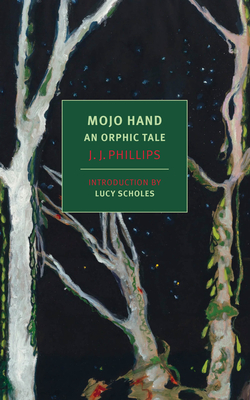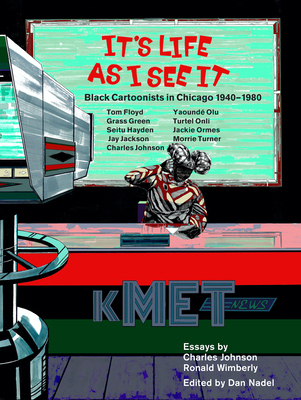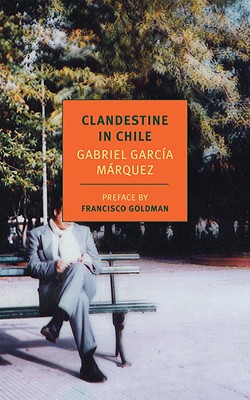6 Books Published by New York Review Books on AALBC — Book Cover Collage
 Mojo Hand
Mojo Hand
by J.J. PhillipsNYRB Classics (Apr 15, 2025)
Read Detailed Book Description
Race, obsession, and the blues are the themes of this wildly original novel by African American poet, novelist, and activist J. J. Phillips.Eunice Prideaux, a young, light-skinned black woman from a well-to-do San Francisco family, is sick of her conventional home. One evening when guests are over, she puts “Bakershop Blues,” by the legendary blues singer Blacksnake Brown, on the record player, and soon the whole well-mannered company is groaning and moaning along with the music.
Soon, too, Eunice has packed up and set off for Raleigh, North Carolina, where Blacksnake lives, knowing that she has “to go find the source of it herself, this music that moved her and the others, however much they tried to deny it.” Disembarking from a train into a hot southern night, Eunice finds herself in an unfamiliar world. Arrested on suspicion of soliciting, she spends a night in prison. After her release, she tracks Blacksnake down and soon she has moved in with him. There is nothing nice about Blacksnake or his way of life. The power of his music is real; so is the ugliness with which he treats Eunice, who finds herself in a dark place, almost deprived of the will to live. Mojo Hand, however, is an Orphic tale, a story of initiation into art and individuality no matter the cost, and Eunice will emerge from the darkness transformed. Long out of print, J. J. Phillips’s novel is a powerfully original work of fiction that sings the blues.
 It’s Life as I See It: Black Cartoonists in Chicago, 1940 - 1980
It’s Life as I See It: Black Cartoonists in Chicago, 1940 - 1980
by Dan NadelNew York Review Comics (Jun 01, 2021)
Read Detailed Book Description
Originally published by Chicago’s Black press, long neglected by mainstream publishing, and now included in a Museum of Contemporary Art Chicago exhibition, these comics showcase some of the finest Black cartoonists.
Between the 1940s and 1980s, Chicago’s Black press—from The Chicago Defender to the Negro Digest to self-published pamphlets—was home to some of the best cartoonists in America. Kept out of the pages of white-owned newspapers, Black cartoonists found space to address the joys, the horrors, and the everyday realities of Black life in America. From Jay Jackson’s anti-racist time travel adventure serial Bungleton Green, to Morrie Turner’s radical mixed-race strip Dinky Fellas, to the Afrofuturist comics of Yaoundé Olu and Turtel Onli, to National Book Award-winning novelist Charles Johnson’s blistering and deeply funny gag cartoons, this is work that has for far too long been excluded and overlooked. Also featuring the work of Tom Floyd, Seitu Hayden, Jackie Ormes, and Grass Green, this anthology accompanies the Museum of Contemporary Art Chicago’s exhibition Chicago Comics: 1960 to Now, and is an essential addition to the history of American comics.
The book’s cover is designed by Kerry James Marshall.
Published in conjunction with the Museum of Contemporary Art Chicago, on the occasion of Chicago Comics: 1960s to Now, June 19-October 3, 2021. Curated by Dan Nadel.
 Clandestine in Chile: The Adventures of Miguel Littin
Clandestine in Chile: The Adventures of Miguel Littin
by Gabriel Garcia MarquezNYRB Classics (Jul 06, 2010)
Read Detailed Book Description
In 1973, the film director Miguel Littín fled Chile after a U.S.-supported military coup toppled the democratically elected socialist government of Salvador Allende. The new dictator, General Augusto Pinochet, instituted a reign of terror and turned Chile into a laboratory to test the poisonous prescriptions of the American economist Milton Friedman. In 1985, Littín returned to Chile disguised as a Uruguayan businessman. He was desperate to see the homeland he’d been exiled from for so many years; he also meant to pull off a very tricky stunt: with the help of three film crews from three different countries, each supposedly busy making a movie to promote tourism, he would secretly put together a film that would tell the truth about Pinochet’s benighted Chile—a film that would capture the world’s attention while landing the general and his secret police with a very visible black eye.
Afterwards, the great novelist Gabriel García Márquez sat down with Littín to hear the story of his escapade, with all its scary, comic, and not-a-little surreal ups and downs. Then, applying the same unequaled gifts that had already gained him a Nobel Prize, García Márquez wrote it down. Clandestine in Chile is a true-life adventure story and a classic of modern reportage.
 The Tiger in the House: A Cultural History of the Cat (New York Review Books Classics)
The Tiger in the House: A Cultural History of the Cat (New York Review Books Classics)
by Carl Van VechtenNYRB Classics (Mar 27, 2007)
Read Detailed Book Description
“A god, a companion to sorceresses at the Witches’ Sabbath, a beast who is royal in Siam, who in Japan is called ‘the tiger that eats from the hand,’ the adored of Mohammed, Laura’s rival with Petrarch, the friend of Richelieu, the favorite of poets”—such are just a few of the feline distinctions that Carl Van Vechten records in this glorious historical overview of humanity’s long love affair with the cat. As delightful as it is learned, Tiger in the House explores science, art, and history to assemble a treasury of cat lore, while Van Vechten’s sumptuous baroque prose
makes the book’s every page an inexhaustible pleasure.
 The Crisis of the Negro Intellectual: A Historical Analysis of the Failure of Black Leadership
The Crisis of the Negro Intellectual: A Historical Analysis of the Failure of Black Leadership
by Harold CruseNYRB Classics (Jun 30, 2005)
Read Detailed Book Description
Published in 1967, as the early triumphs of the Civil Rights movement yielded to increasing frustration and violence, The Crisis of the Negro Intellectual electrified a generation of activists and intellectuals. The product of a lifetime of struggle and reflection, Cruse’s book is a singular amalgam of cultural history, passionate disputation, and deeply considered analysis of the relationship between American blacks and American society. Reviewing black intellectual life from the Harlem Renaissance through the 1960s, Cruse discusses the legacy (and offers memorably acid-edged portraits) of figures such as Paul Robeson, Lorraine Hansberry, and James Baldwin, arguing that their work was marked by a failure to understand the specifically American character of racism in the United States. This supplies the background to Cruse’s controversial critique of both integrationism and black nationalism and to his claim that black Americans will only assume a just place within American life when they develop their own distinctive centers of cultural and economic influence. For Cruse’s most important accomplishment may well be his rejection of the clichés of the melting pot in favor of a vision of Americanness as an arena of necessary and vital contention, an open and ongoing struggle.
 Blood on the Forge
Blood on the Forge
by William AttawayNYRB Classics (Jan 31, 2005)
Read Detailed Book Description
Praised by both Richard Wright and Ralph Ellison, this classic of Black literature is a brutal depiction of the Great Migration from the Jim Crow South
This brutally gripping novel about the African-American Great Migration follows the three Moss brothers, who flee the rural South to work in industries up North. Delivered by day into the searing inferno of the steel mills, by night they encounter a world of surreal devastation, crowded with dogfighters, whores, cripples, strikers, and scabs. Keenly sensitive to character, prophetic in its depiction of environmental degradation and globalized labor, Attaway’s novel is an unprecedented confrontation with the realities of American life, offering an apocalyptic vision of the melting pot not as an icon of hope but as an instrument of destruction.
Blood on the Forge was first published in 1941, when it attracted the admiring attention of Richard Wright and Ralph Ellison. It is an indispensable account of a major turning point in Black history, as well as a triumph of individual style, charged with the concentrated power and poignance of the blues.
